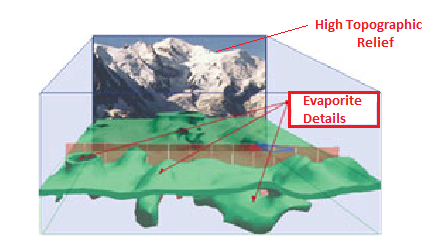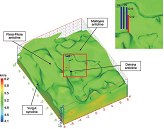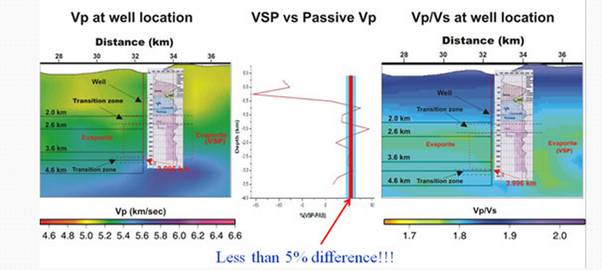Proven Technology
At LandTech, we are driven to help our oil and gas company customers solve their toughest operational and imaging challenges. The “easy” oil and gas have been found; finding the rest requires the application of advanced geophysical methodologies. Passive Seismic Tomography (PST), first introduced by LandTech is a revolutionary well proven technology. Whether you're sizing up the prospectivity of a frontier thrust belt basin, working to extract maximum value from a mature reservoir, or encountering severe seismic penetration problems our well proven technology can help.
Sub Salt
One of the more perplexing areas in the upstream hydrocarbon industry is subsalt exploration and reservoir development since the salt layer distorts the seismic energy, posing unique imaging challenges. LandTech is unrivalled for imaging complex salt bodies since the “seismic sources” (that is the microearthquakes) are within or below the target we are looking for.LandTech has extensive experience successfully acquiring, processing, and interpreting seismic data in subsalt regimes:
Featured Case Study
A major oil company had amassed a vast portfolio to explore a thrust belt region encountering severe geological problems in NW Greece. The acreage was believed to be highly prospective but the potential reservoir targets were difficult to image, as many were obscured by salt bodies, extensive salt sheets while the high topographic reliefs increased the cost of conventional seismic surveys which whenever applied failed to provide any useful results. LandTech was asked to map in detail the evaporate (see picture below).

Click here to watch 3D Vp video of the velocity structure below the entire exploration block.
Sub Basalt
Basalt reservoirs are particularly difficult to image. Basalt flows often have rugose tops and interbed surfaces that, together with fracturing, cause scattering of the seismic energy. This leads to both noisy data and complicated ray-paths that require sophisticated techniques to correctly image the subsurface. Although survey designs that capture long-offset data and acquisition techniques that enhance low-frequency content can help with sub basalt exploration, their results cannot be compared with the accuracy of our PST methodology. In our approach “we shoot” the envisaged target from bellow avoiding all the aforementioned problems and all this at a fraction of the cost of the conventional seismic methods.
Thrust Belt
Among global hydrocarbon provinces, thrust belts are the most complex geological systems and technically challenging environments for exploration. Thrust belts are typically associated with difficult and environmentally sensitive areas, making acquisition costly. Such difficult terrains, which often include steep mountains and foothills, can suffer from near-surface data and ray-path problems, and no two regions are alike. LandTech offers several distinct advantages to operators in thrust belt regimes since there is no need to deploy many thousands of geophones but only a few tenths of passive seismographs easily installed at selected points and letting nature to provide the seismic sources (microearthquakes) for free!
Featured Case Study
A major Oil and Gas company encountered severe exploration problems to reveal potential oil and gas traps in their thust belt block in SE Albania, a region with extremely compicated geology. LandTech Enterprises not only succeeded in providing detailed 2D and 3D geological models but pinpointed also locations where later drilling revealed the existence of considerable oil and gas reservoirs.

Click here to download a paper recently published in Geophysics describing this successful case history.
Comparison with VSP results
We are so confident about the accuracy of our revolutionary PST methodology that we can even compare our PST results with results from a VSP survey. The following example is from a well in a block in SE Albania where LandTech performed a 3D PST survey. After the well was drilled we compare the Vp velocities obtained from the sonic log with those obtained from the PST survey. The difference was less than 5%!

Click here to see many successful examples of problems solved by our PST technology